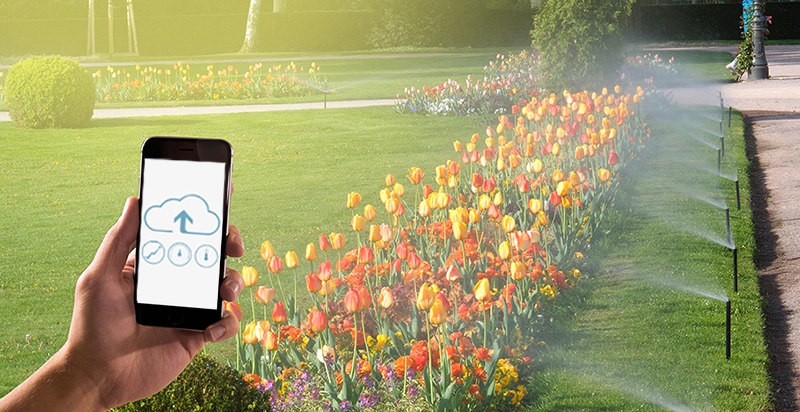Water conservation is a critical consideration for commercial buildings, especially in an era where sustainability is a priority and operational costs continue to rise. Commercial properties, including office buildings, hotels, and industrial facilities, are often significant water consumers. By implementing effective water-saving strategies, businesses can reduce water usage, cut costs, and contribute to broader environmental goals. This blog will explore several practical and impactful strategies for conserving water in commercial buildings, from upgrading fixtures to adopting innovative technologies.
1. Upgrade to Water-Efficient Fixtures
One of the simplest and most effective ways to reduce water consumption in commercial buildings is by upgrading to water-efficient fixtures. Modern faucets, toilets, and urinals are designed to use significantly less water without sacrificing performance.
Recommended Upgrades:
- Low-Flow Faucets and Aerators: These fixtures reduce water flow while maintaining sufficient pressure for handwashing and other tasks.
- Dual-Flush Toilets: These toilets offer two flushing options—one for liquid waste and one for solid waste—allowing for more efficient water use.
- Waterless Urinals: Waterless urinals use no water and can save thousands of gallons yearly in high-traffic areas.
Benefits of Upgrading Fixtures:
- Immediate reduction in water usage.
- Cost savings on water bills and maintenance.
- Easy integration into existing plumbing systems.
2. Implement Smart Irrigation Systems

Irrigation can be a major source of water consumption for commercial buildings and landscaping. By adopting smart irrigation systems, businesses can ensure that water is used efficiently, only when needed, and without waste.
Smart Irrigation Features:
- Weather-Based Controllers: These systems adjust watering schedules based on real-time weather conditions, ensuring that plants receive the right amount of water and avoiding overwatering during rainy periods.
- Soil Moisture Sensors: Sensors placed in the soil can detect moisture levels and activate irrigation only when the soil is dry, reducing unnecessary water use.
- Drip Irrigation Systems: Drip systems deliver water directly to the roots of plants, reducing evaporation and water runoff.
3. Install Greywater Recycling Systems
Greywater recycling is an innovative solution that allows commercial buildings to reuse water from sinks, showers, and laundry for non-potable purposes such as toilet flushing or irrigation.
How Greywater Systems Work:
Greywater from bathroom sinks and other sources is collected, filtered, and treated before being reused within the building. This significantly reduces the need for fresh water and lowers overall water consumption.
Advantages of Greywater Recycling:
- Reduces demand on municipal water supplies.
- Decreases water bills by reusing water that would otherwise go to waste.
- Supports a more sustainable water management system.
4. Rainwater Harvesting for Commercial Use
Rainwater harvesting involves collecting and storing rainwater for later use, which can be an excellent solution for reducing water consumption in commercial buildings. The harvested water can be used for irrigation, cooling towers, or non-potable water in restrooms.
Rainwater Harvesting Components:
- Collection System: Roofs and gutters capture rainwater, which is then directed to storage tanks.
- Filtration and Treatment: The collected water is filtered and treated to ensure it is safe for its intended use.
- Storage Tanks: Large tanks store the water until needed for non-potable applications such as irrigation or industrial processes.
Benefits of Rainwater Harvesting:
- Reduces reliance on the local water supply.
- Lowers water bills by utilizing a free, natural resource.
- It can be scaled to meet the specific needs of the building.
5. Conduct Regular Water Audits
A water audit is essential for identifying areas where water use can be reduced and efficiencies improved. These audits assess water consumption patterns and help facility managers understand how much water is being used, where it’s being wasted, and what steps can be taken to reduce usage.
Key Components of a Water Audit:
- Usage Tracking: Monitoring water use in different building parts to identify inefficiencies.
- Leak Detection: Checking for hidden leaks that may be causing unnecessary water loss.
- Fixture Inspection: Ensure all faucets, toilets, and other fixtures function properly and use water efficiently.
Benefits of Regular Water Audits:
- Identifies specific areas for improvement.
- Helps set benchmarks and track progress over time.
- This can lead to cost savings by detecting leaks and inefficiencies early.
6. Educate and Engage Occupants
Encouraging building occupants to adopt water-saving habits can significantly reduce overall consumption. By educating employees, tenants, and visitors about the importance of water conservation, commercial buildings can foster a culture of sustainability.
Ways to Engage Occupants:
- Signage and Reminders: Place signs in restrooms and kitchens to remind people to turn off taps and report leaks.
- Incentives for Conservation: Offer rewards or recognition to departments or teams that reduce water usage.
- Workshops and Training: Hold regular workshops or training sessions to teach occupants about water conservation practices and how they can contribute.
Embracing Water Efficiency in Commercial Buildings
Water conservation is an environmentally responsible practice and a financially sound decision for commercial buildings. Businesses can significantly reduce their water consumption by upgrading fixtures, implementing smart irrigation, adopting greywater recycling and rainwater harvesting, and conducting regular audits. These strategies lower costs and support broader sustainability goals, contributing to a greener future. The key to success lies in combining technology, education, and proactive water management practices that make conservation a part of everyday operations.

